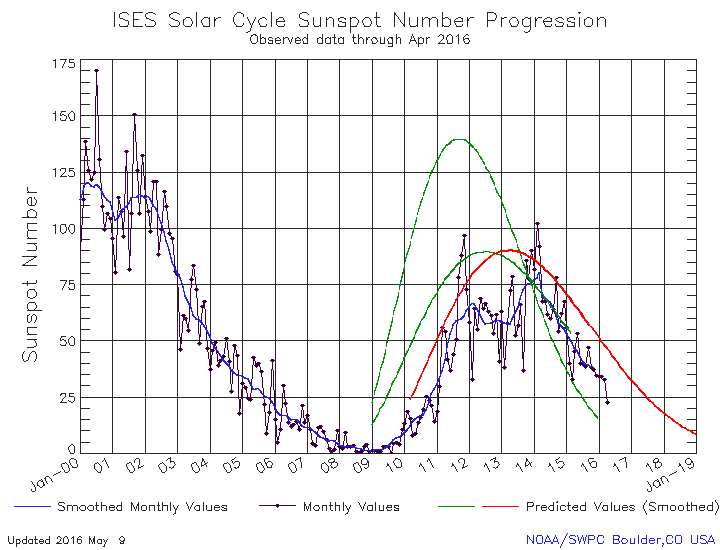
The uncertainty of science: A new review of Al Gore’s movie “An Inconvenient Truth”, ten years later after its release, looks closely at the predictions the film made to see if they have come true, or were at least pointed in an accurate direction.
Guess what? The film’s predictions have turned out to be generally wrong. From predicting an ice-free Arctic to a snow-free Mt. Kilimanjaro to more extreme weather to a continuing warming as carbon dioxide increased, Gore’s predictions have each failed.
I especially like the last one, that as carbon dioxide rose the temperatures would rise in lockstep, as predicted by all climate models. The article notes that temperatures have not done so, that the global climate temperature has been practically unchanged since 1998, and backs up this point with a paper published by the science journal Nature.
The graph above is from that paper. The black line that rises above the red, blue, and gold lines is one of the more respected climate models. The other lines are from the actual data. As you can see, the climate model fails to predict the climate, meaning that the theory used to create it is incomplete or inaccurate.
This is not to say that the theory might not be true. Global warming, initiated by the increase in carbon dioxide in the atmosphere, might very well happen. The data shows however that the climate scientists touting this theory do not yet understand the Earth’s complex global climate well enough to prove their theory true. There are other factors influencing the climate they have not yet recognized, factors such as the Sun’s variability and the fact that CO2 by itself is a actually a trace gas and not the atmosphere’s chief global warming component, which is water.



